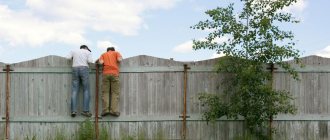There are many reasons why a child fights at school. Therefore, before scolding or shaming your child, you need to understand his motives. But first of all, you need to find out - is he really fighting? After all, you were not with him and before calling the conflict a fight, you need to try to find out everything in detail.
Schoolchildren are no longer naive angels. They are capable of cunning, intrigue and other not very decent actions, so you should not immediately blame or take the word of either your child or his classmates.
A child fights at school. Causes
He doesn't know that fighting is bad
Oddly enough, but this happens if everything was allowed to him at home. If, when he was fighting in the yard, dad said: “well done, a real man is growing up.” Or when there was a conflict with other children, the mother rushed at them like an eagle, believing that her baby could not be to blame. Now the child, confident that everything is allowed to him, finds himself in a place with new rules. Therefore, if you want to avoid serious trouble, you need to explain to him as soon as possible how to communicate with other people without fists.
He's been under a lot of stress
Children still do not cope well with emotions and may try to relieve the death of a beloved dog, divorce of parents or other serious stress in such an inadequate way as a fight. If a child starts fighting after some misfortune, then help him survive this stress until he gets used to relieving his pain with someone else’s pain.
One of the parents behaves the same way
Alas, if there is a tense situation in the family, if the father (or even the mother) bullies or beats members of the household, then there is nothing strange in the fact that the child fights at school.
He became the target of bullying
If your child has become a “whipping boy,” then it is easier to transfer him to another school than to figure out why he is being bullied in this one. But be sure to take him to a psychologist, understand the situation thoroughly, otherwise everything could happen again at the new school. Make sure he doesn't see everyone around him as an enemy. Help him learn to find the good in others and communicate with people, otherwise his entire future life will turn into a series of misfortunes and conflicts.
He fell under someone else's influence
Quite often, children are divided into groups, and if your child ends up in one that proves everything with their fists, then he too can adopt this manner. It is not very difficult to remove a child from the influence of his peers. But serious problems can arise with a teenager. Here you will have to convince, persuade, involve a psychologist, class teacher, or even transfer the child to another school.
He asserts himself
Unfortunately, schoolchildren often get into fights to assert themselves. If you think this is the case, then try to help your child find another way to become more confident. The sports section can help here - he will not only learn to direct his aggressiveness in the right direction, but will also become confident enough not to fight over trifles.
If your child is stressed
Children, and especially schoolchildren, cannot or do not know how to express their anxieties and depression in adequate ways. The school environment, workload, demands from teachers, mom and dad are not yet so familiar, so parents have to learn about this from red entries in the diary. It is very important that the school has conditions for the outburst of emotions to be directed in the right direction: sports, physical education, outdoor games and general interest in learning.
Another situation: your second child was born or some disagreement began in the family. Children can be very sensitive to such events, but they are afraid to ask something again, so as not to fall under the “hot hand”. They are ashamed of their jealousy of their younger sister or brother, so they know how to not show it at all. And this resentment is repaid on other people's children. If the above is just about your family, try to talk more “at home.” Don't confuse this with moralizing. Talk calmly, respectfully - this way you will understand the real reason for uncontrolled actions and constant comments from teachers in the diary.
What to do if your child fights
In any case, if you are informed about a fight, try to get to the bottom of the truth and have a heart-to-heart talk with your child. Do not forget that in life there are actually situations when it is impossible to do without a fight. It’s another thing to teach your offspring to understand when to fight and when to try with all your might to avoid conflict.
Do all fights look the same?
There are certain stages in the development of children's aggressiveness; at each age they have their own special features and require a different approach from parents.
1.5-2 years
The age when the first attempts to stand up for oneself appear. Any small child can easily swing his hand, hit another toddler with a spatula, or push him. This happens unconsciously, often in response to similar behavior of playmates. You shouldn’t lecture your little one and think about how to wean him from a bad habit; it doesn’t exist yet. You need to say “this is bad” and prevent the quarrel from continuing by offering the correct version of the game. Gradually, your son or daughter will understand what to do in such situations and will learn to cope with them well themselves.
3 years
At 3-4 years old, conflicts on the playground or in kindergarten become an attempt to defend something of one’s own: a place in the sandbox, an unusual toy, or even a beloved friend. The baby already understands that fighting is bad, but is not always able to control himself well; emotions constantly take precedence over the learned rules. He will already confidently tell you that fighting is ugly and he won’t do that again, but in practice, violent quarrels will not stop. At this age, it is important to teach a child to share, wait his turn, and ask for permission. A little politeness will help turn a bully into a good girl.
5 years
By this age, most preschoolers have already learned the rules of behavior and know perfectly well how to behave with others. They already quite consciously use their fists to prove their strength or the right to command, to be “in charge.” They often reinforce with aggressive actions words about their own special capabilities and talents (“I am the first!”, “I am strong!”). At this age, the authority of an adult and his negative attitude towards such behavior are important. Be sure to praise your preschooler if you notice his correct action in a conflict situation. Show him that you appreciate his diplomacy and are very proud of your smart son or daughter. A timely, approving phrase is much more useful than endless comments.
Read also…. The best online games for girls
7 years and older
Fights at school serve as an attempt to establish yourself in the team, take the place of a leader, or get out from outsiders. They are used by lagging students to take revenge for failures at the board. At this age, children begin to fight with each other together, group against group. It is important for parents of schoolchildren who have fought to find out the reason for the quarrel and to understand the situation well. You may need help from other parents, teachers, or a school psychologist.
Teenagers: “You still have to fight back!”
But older children do not take the words of adults so easily. And they try to expand the boundaries set by adults and test their strength. I have not yet been able to dissuade teenagers aged 12-13 years (the most difficult, conflict-ridden age) from the fact that fighting back is a matter of honor, and “telling a story” is shame and disgrace.
But what to do, I ask the sixth-graders, if the forces are unequal? What if, for example, one of you became the object of ridicule and bullying from older and stronger guys? “We’ll still fight back!” — teenagers don’t give up.
One of the boys came up to me after class with a question: “Imagine if you were a boy, and your friend was attacked by older guys? What would you do? Would you run to complain to adults or get into a fight?” I answered with a smile that I couldn’t answer this question because I’m not a kid. But she noted that there is some truth in these arguments.
At the next lesson, I decided to show the children the film “Pay Another One.” It seemed to me that this film would help answer questions about what to do when a friend is being bullied by stronger people. The plot of the film seemed very suitable to me. The main character is a 12-year-old boy who strives to do good deeds. His friend is systematically bullied by a group of high school students. The hero suffers for a long time, not knowing how to help his friend. In the end, he plucks up courage, gets into a fight with older guys and dies as a result of a knife wound.
The guys watched the film with excitement and interest. Closer to the denouement, opinions were divided. The girls believed that the hero would tell one of the adults the situation with the boy’s bullying and ask for help. The boys, on the contrary, expected the hero to find strength within himself and defeat the aggressors. How fervently they cheered for him!
Despite the tragic ending of the film, the boys remained unconvinced. And my “But if only someone had turned to adults for help in time...” turned out to be unconvincing. Of course: the guy died like a real hero, defending his friend. I didn't chicken out. He showed, so to speak, “boyish valor.”
But I stand my ground. If you feel that you can resolve the conflict yourself, well done. If the situation reaches a dead end, adults can and should be informed. Once again I draw the line between an ordinary fight and physical violence, between ordinary teasing and psychological violence.
Advertising
If a child fights with other children
What measures should attentive adults take if they see or learn that their child is showing aggression towards peers?
- Take him to the doctor. Perhaps the fact is that the child does not feel well, he is not entirely healthy. A consultation with a neurologist can help solve the problem once and for all. For example, one of the most common causes of childhood irritability is high intracranial pressure. If you can reduce or completely eliminate the symptoms of physical illness, this will immediately affect your character and actions.
- Understand and support. Adults must learn to respond appropriately to children's outbursts of anger. There is no need to shame or read morals. It is necessary to clearly and clearly show the child that you do not approve of such behavior and do not encourage its continuation or repetition. It makes no sense to shout at the guilty “fighter” or hit him, this will only make things worse.
- Learn to express your feelings and requests in words. Talk to your child more. Show him an example of how important it is to be able to explain, ask, and prove. Teach, best by personal example, to defend your opinion with words, not fists!
- Organize sports activities. Physical activity helps relieve tension and provides an opportunity to release excess energy. A huge selection of sports sections allows you to choose the right one for each child. Active games in the fresh air also bring excellent results.
- Provide psychological comfort. Try not to take your irritation out on your child, don’t make him nervous, and don’t surround him with numerous prohibitions and rules. Allow him to express himself, his needs and interests more freely. Don’t pester him with endless nagging and comments, respect his opinion, maintain independence. Be him not only a caring parent, but also an attentive friend.
- Don't be shy to ask for help. If the above measures do not bring results, then you should seek help from a specialist - a child psychologist. The games and exercises he suggests can eliminate the problem completely or reduce its severity. Parents will receive specific practical advice on what they should change in their behavior and what characteristics of the child to take into account. They learn exactly how to react correctly in difficult situations. Useful rules will always be at your fingertips and will allow you to successfully deal with the problem yourself. They will also tell you how to explain to your child that you can’t fight.
Why does a child fight on the playground or at a party?
Children, especially from one to 3-4 years old, are still trying different models of behavior that will help them achieve the desired result. For example, a one-year-old child may fight only because he does not yet know how to express his anger in another way. And at the same time, he is still not able to control his feelings.
Don't scold him by punishing him and taking all his toys back. Talk through his feelings and those of the “victim.” For example: “I understand that you really liked his toy and you also wanted to play with it, right? But he didn't allow it. And then you got very angry and decided to hit him. How do you think he feels now? Look, he’s crying, he’s in pain.”
Show him by your own example what further behavior would be correct in such a situation. Approach the “victim” yourself, apologize for the child, have pity. It is better, of course, to do this together with your child. But at least this way.
No matter how banal and hackneyed it may sound, remember that when assessing what is happening, evaluate the child’s actions and behavior, and not the child himself!
It seems like everyone has already heard and knows about this, but on the playground every day you can hear “What a hooligan you are!” Let's go home, stupid! You are a brawler! Nobody wants to be your friend!”
Believe me, children really believe the words of their parents. And if a parent says so, then it is so! And if this is not so, then you need to become so. And your child will only reinforce this behavior.
How to stop a small child from fighting?
From early childhood, a child must be taught to keep his emotions under control, express his thoughts, communicate with other children, ask and thank them, be able to play and lose, otherwise many problems will arise in kindergarten or school, which will be too late and difficult to correct.
The child must understand that a fight is not a joke: for example, if a child hits his mother, she can step aside, showing that she is hurt and offended, and other relatives can come up to her and console her.
It is worth limiting the viewing of violent cartoons and films, because the child begins to copy the behavior of the heroes: he speaks rudely, fights, offends others, considering this the norm of behavior.
Home peace training
- If there is no opportunity to visit a child psychologist, then parents may find the following practical tips useful that can reduce or completely “nullify” aggressive outbursts. So what should parents do if their child is fighting?
- Learn to express anger appropriately. Show your child what to do if he is angry. Tearing paper, using a balloon as a punching bag, kicking a pillow - all this will allow you to “let off steam” without causing harm to others.
- Together, act out scenes from everyday life using figurines, repeating conflict situations that are well known to the child. Let the characters, controlled by dad or mom, show the correct ways to solve them. It’s great if this happens in a fun, relaxed atmosphere, such lessons are better learned.
- Play more with sand and water. These activities are a natural anti-stress. They perfectly relieve tension, promote general relaxation and improve mood. Especially if you spend them accompanied by calm music. There is no need for a special plot; the material itself will suggest it.
- Try to show your child as many positive examples of “bloodless” resolution of quarrels as possible. To do this, you should select special books and cartoons with simple instructive stories. They will help you clearly explain the rules of behavior and the possibilities of getting out of any difficult situations.
- If you are faced with the fact that your child is fighting with other children, then do not panic and despair. Every parent encounters this problem, sooner or later. The main thing is to cope with it successfully. We hope that the article will tell you the right ways to solve this pedagogical problem.
Students at any age can enter into conflicts - some of them end in a fight. We'll figure out what a teacher should do if schoolchildren get into a fight during class or recess, who is responsible for the fight outside of school, and how parents can help.
Eliminate recess—or keep kids occupied
When I first started working at school, my first desire was... to eliminate recess. And if not removed, then shortened - especially the long ones, twenty minutes long. During which emergencies of large and small scale occur. From lost things to traumatic fights.
Why? I think... out of boredom. And from a lack of organizing control. If during the lesson the students’ activities are clearly structured by the teacher, then during breaks they sometimes simply do not know what to do with themselves. Or maybe, to make it less boring, hide Mashin’s briefcase in the school toilet? And then watch with laughter how “cool” it will be for her to run around the school in tears?
It's easier with younger students. In good weather, children can be taken out to the school yard and organized outdoor games; in bad weather, they can give out dominoes or “riddles”, and the most restless ones can be allowed to “run around a little” in the corridor in front of the teacher. It is impossible to organize supervision for teenagers, and they do not want it.
Although it varies. For example, my daughter and her classmates enjoy spending recess in the class teacher’s utility room, drinking tea and talking. There are no conflicts or negative tendencies in the class. Or rather, there are difficult situations, but “the master’s work is afraid.” In general, relationships in the class are positive, and this is definitely the merit of the teacher.
However, there are not so many enthusiasts who organize tea parties for children during breaks. Not surprising - after all, teachers need to gain strength before the next lesson.
As a result, children who often have nothing in common other than a common number and letter of the class, children from different social strata who have completely different interests and values, children who have poor communication skills, but by any means strive to take a place in the sun in the class team - children are left to their own devices.
And the call “in case of conflict, seek help from adults” only causes an incredulous grin: where can we look for them, these adults?
Who is responsible for fights in and outside of school?
The teachers and the principal are responsible for everything that happens at school. When a fight occurs in the classroom, the teacher is somehow to blame. If there is a break, responsibility lies with the teacher on duty or administrator.
For fights outside of school, the teacher and administration are responsible in two cases: if everything happened outside of school and if the child was registered at school. In the first case, the teacher will be asked why the student got into a fight, especially if he was supposed to go on an excursion but was in another place. In the second case, they will ask the psychologist and social teacher, who should be more careful in monitoring the contacts of schoolchildren.
Read also…. What to do if your child is a bully: 6 tips for parents
According to the laws of the Russian Federation, parents are responsible for a child under 14 years of age, including administrative responsibility. From the age of 14, the child is partially responsible himself - at least in terms of administrative and criminal responsibility.
How does fighting threaten a student?
If the student is under 14 years old, then his parents will be responsible. In this case, parents bear only financial responsibility, that is, they can pay a fine.
Serious bodily harm includes danger to life, loss of hearing or vision, termination of pregnancy, and facial disfigurement. This is already a crime.
From the age of 14, a child bears both administrative and criminal liability. He may be charged a fine or deductions if he has his own source of income. A criminal case could be brought against him for causing harm to health of moderate severity, serious bodily injury and murder. Experts assess the severity of physical damage. As a rule, if harm from beating is moderate, the victim must spend at least three weeks in the hospital. Serious bodily harm includes danger to life, loss of hearing or vision, termination of pregnancy, and facial disfigurement. When a child turns 16, he may be criminally liable for disorderly conduct and battery. An aggravating circumstance for a student would be fighting while under the influence of alcohol or drugs and intentional actions.
The instigator faces penalties from the school administration for the first time. If the penalty is repeated, the case will be brought up for discussion by the parent committee and student representatives. The school may expel a student over 15 years of age for repeated violations of discipline and law and order with the consent of these representative bodies.
How do student fights threaten the teacher?
If the teacher was in the class, he most likely saw the emerging conflict between minors and could prevent it. Therefore, he faces penalties from the administration, and the director faces a fine. But if the teacher and director prove that they are not guilty, then nothing will happen. Evidence will be required when students or parents report the fight to the police.
It is difficult to hold teachers and principals accountable for fighting among minors outside of school. If the student was registered internally at school or registered with the KDN, then a dialogue will take place between the administration and the KDN. How it goes depends on all the circumstances and the behavior of the student, it can be very different.
How to avoid becoming a victim? About victim behavior - using the example of the film “Scarecrow”
In conversations with them, the famous film “Scarecrow” was a hit. Fragments from the film turned out to be very revealing and accessible to children.
Fragment number one. A new girl comes to class. Before she can cross the threshold, her classmates trip her up and start making fun of her. What is the reason for ridicule? The fact that the girl is awkward, clumsy, with a confused smile? Or that her grandfather, a famous art collector, wears patches on his coat? No: it’s just that in this class ridicule and ridicule are the usual style of communication. Every second person has a nickname, and not the most pleasant one. Does Lena behave like a victim? Not at all. He doesn’t cry, doesn’t get offended—he smiles openly at everyone and laughs with everyone else. A very correct model of behavior... Perhaps she wouldn't have been bullied in class. After all, only the one who is offended is offended. And why the class turned against her is another story.
Rewind to another frame. Lena leaves the hairdresser. A crowd of classmates (furious with resentment that “they didn’t take me to Moscow”) surrounds the girl and begins to fire at her with tubes. What is the girl doing? Why doesn't he go back to the hairdresser? Won't he call an adult for help? He won’t turn around abruptly and say, “Get away from me!” won't go home? No, she looks in confusion at the crowd of brutal classmates, clumsily dodges shots, grabs her bruised places. Is she acting like a victim? Yes!
Further more. Classmates climb into Lena's garden and take her dress off the rope. And then they start playing “dogs” with this very dress. They showed it, teased it, and started throwing it at each other. Lena runs in circles, trying in vain to catch her dress. Why is she doing this? And what behavior would be the most logical in this situation? Give up and go home. And at home, tell the adults that some unsound children climbed into the garden and actually committed a theft. And let the adults go to the parents of the hooligans and demand they buy a new dress. Or to the police. Or to the school principal. And this will become a problem for hooligans. And the girl, who, like a dog, ran in a circle and frantically tried to snatch the dress from the hands of the brutal crowd, behaved like a typical victim.
Perhaps the example of the heroine of “Scarecrow” was a little distorted (after all, the girl’s love experiences were also involved), but still. I confidently convey the following to teenagers: you must know that NO ONE, under any circumstances, has the right to treat you THIS way. When ridicule and mockery are taken not for granted (I deserve it, I’m guilty, I’m bad), but as something completely alien, this is what allows you to avoid becoming a victim.
And the algorithm of actions will already be dictated by circumstances, multiplied by temperament: either being lazy, or complaining to mom, or kicking open the door to the school principal’s office and loudly demanding an end to the lawlessness on the part of classmates. Any option will be correct - but just don’t silently swallow tears with the thoughts “that’s what I need.”
Advertising
Fight in class: what to do?
What to do. It’s rare, but schoolchildren and schoolgirls can fight right in class or during a break in the presence of a teacher. The teacher must separate the fighters without harming any of them. It is best to separate them in different directions. It's even better if no other students are involved. When the teacher realizes that his strength is not enough, he needs to send any student to the nearest office for help.
Where to report. The director of the educational institution or his deputies.
They decide whether to report to the police or an ambulance. Usually, if there are no signs of beatings and everyone feels fine, then the police are not reported. But when a fight between specific students does not occur for the first time, then it is worth calling the police, regardless of the severity of the injuries and the nature of the harm. It is important to understand that a paramedic does not have the right to film beatings, only emergency doctors.
Be sure to inform your parents and call them to school. Here the teacher’s task is to prevent conflict between the students’ concerned parents. It is also worth informing the psychologist and the person responsible for the school reconciliation service. They must launch the process of reconciliation between the parties to the conflict.
If there is a need, you need to notify the juvenile affairs commission. As a rule, the teacher can assess the motives of the fighters and determine the culprit. If first-graders did not share the apple, could not contain their emotions and fought (but did not cause harm), the intervention of a school psychologist is sufficient. It is not necessary to register children within the school, much less notify the Control Department. But when the reason for the fight is serious or the “crime” has not occurred for the first time, it is important to notify the KDN.
How to prevent. Initially, it’s easy to understand how children live. When a teacher devotes time to students, he has a greater chance of seeing emerging conflicts: detecting an approaching quarrel or beginning bullying. Of course, moralizing conversations are unlikely to help, but training will help. They can be conducted by a psychologist or taught simple techniques by a teacher. At the trainings, children will be able to learn how to work with anger, get out of conflict without a fight, ignore the offender, and experience emotions safely.
Fight on school grounds: what to do?
What to do. If students are fighting during recess, the teacher on duty or the administrator on duty should notice this. His task is to immediately separate the fighting and prevent more children from getting involved in the fight. If the teacher was informed about a school fight by other students, he must immediately come to the scene and separate the fighters (only carefully so that he himself is not harmed by accident).
If everything happens on the porch, in the courtyard or in the school foyer, a security guard must intervene. Strangers cannot be detained, but the police must be called.
Where to report. Notify the school administration and parents. If necessary, call an ambulance and notify the juvenile affairs commission. If the conflict did not lead to serious consequences or cause harm to health, then it is enough to notify the psychologist and the person responsible for the school reconciliation service. If there are serious consequences or someone other than students is involved in the conflict, call the police.
How to prevent. The main way is to create a favorable atmosphere at school. In many ways, this is the work of the reconciliation service of an educational institution: their functionality is to extinguish emerging conflicts and create a favorable atmosphere. However, without the help of a teacher, it is unlikely that anything will come of it: he spends more time with children, his model of behavior is primarily read by children. Students are not robots: they need relaxation. It would be good to teach them how to achieve release without fighting.
Why is the child fighting?
Aggression, according to psychologists, is a natural part of growing up for any child. Even at 3 months, when the mother disappears from the baby’s field of view, and he begins to twist his legs and groan, this is already a manifestation of dissatisfaction. But the baby will really struggle at an older age. Child psychologist Tatyana Malyutina argues that aggressive behavior is an inevitable companion to a child’s age-related crisis. But before one year of age, it is difficult to talk about conscious infliction of pain; rather, aggression is caused by physiological reasons.
Children under one year old often bite simply because their gums itch before teething.
From one to two years
A literally tangible manifestation of aggression appears from the age of one, when the baby can already walk and begins to climb everywhere. And his parents annoy him by saying 200 times a day: “You can’t!” Since he cannot express his dissatisfaction with words, pinches, blows and bites are used. In addition, a child may simply find it funny when his mother twitches from a tiny palm hitting her.
At 2–3 years
Starting from the age of two, the child already stands firmly on his feet and understands what a ban is. However, he has a great desire to know the boundaries beyond which his freedom extends. One of these methods is a fight: “What will happen to me if I hit?” There are two factors that provoke this type of behavior:
- Parents forgive the child everything, but he continues to look for boundaries that will be impossible for him to overcome. Such responsibility for his own behavior is beyond the strength of the baby, and he chooses the only way he knows to deal with an ambiguous situation - fists.
- A frivolous attitude towards your beloved child - the child’s behavior is perceived only as an evil game that cannot lead to anything bad. But the baby perceives this as indifference and wants to attract attention.
Sometimes a child shows aggression towards his mother to get her attention.
Sometimes the reason for the fight is more trivial - another child took something away from the baby or they don’t give him his own toy, and the parents don’t try to return the right thing. And then he himself begins to restore justice as best he can.
At two or three years old, children fight on the playground because they didn’t share something.
Psychologists note that if from one year to about 3.5 years a baby fights for no apparent reason (according to the parents), he is fighting an incomprehensible and evil world that surrounds him. For example, a mother is talking enthusiastically on the phone, and when the baby comes up to her, asking to be held, she screams that he is bothering her. Then the baby can snatch the device from her and throw it on the floor, and hit or pinch the beloved parent. For the child, this was an incomprehensible situation that could only be dealt with by force, since he could still say almost nothing.
From 3 to 7 years
From 3 to 7 years old, the child already fights for quite good reasons. This age is marked by the development of a strong sense of ownership. And the baby already understands what resentment is and sometimes defends his self-esteem with his fists. However, these facts are often just a reason for assault. But the reasons could be:
- The child has poorly developed speech, he cannot pronounce sounds or suffers from delayed development, so it is easier and faster for him to hit than to find the right words to defend his point of view.
- Trying a new behavior model - the baby is looking for a way to achieve what he wants. And if persuasion does not help, he will try another method - inflicting physical pain.
- Health problems - sometimes a child is sick with something and, experiencing physical discomfort, cannot come to terms with it. The only way to get rid of accumulated negativity is to throw it out in a fight.
- When a baby at this age hits his mother, this may be a manifestation of jealousy towards the newly born brother or sister. The child reacts just as sharply to the parent’s indifference to him.
- The child does not know how to communicate and play with other children. Sometimes this happens when the child has just started kindergarten, and before that he rarely had contact with peers. The other children are not interested in being friends with him, and then he can break other people's toys and destroy what his classmates have built. His main entertainment in this case is to play catch with offended children. And if you manage to kick the teacher, the day is definitely a success!
If a child does not know how to prove what is right with words, most likely he will use intimidation
Child psychology sometimes operates with such a concept as negative self-presentation. This means that a child or teenager at any age attracts the attention of others through bad actions. This usually happens in cases where he lacks the attention of his closest people.
Video: Doctor Komarovsky about the reaction to a child’s aggression
School age children
Once children enter school, they may fight for the following reasons:
- The student is trying to become a leader or create for himself in the class the status of the one and only, which he is in the family.
- According to Izhevsky psychologist Igor Perevozchikov, a schoolchild can use physical strength to achieve self-realization due to overprotection in the family.
- Due to poverty, children often suffer from low self-esteem because they cannot afford the same clothes or phone as their peers. Therefore, they earn authority with their fists.
- In some cases, due to religious or even family traditions, the student is very different from his classmates and becomes an outcast. And then he has two options - to become a “scapegoat” for the entire class or to prove by force that he is no worse than others.










